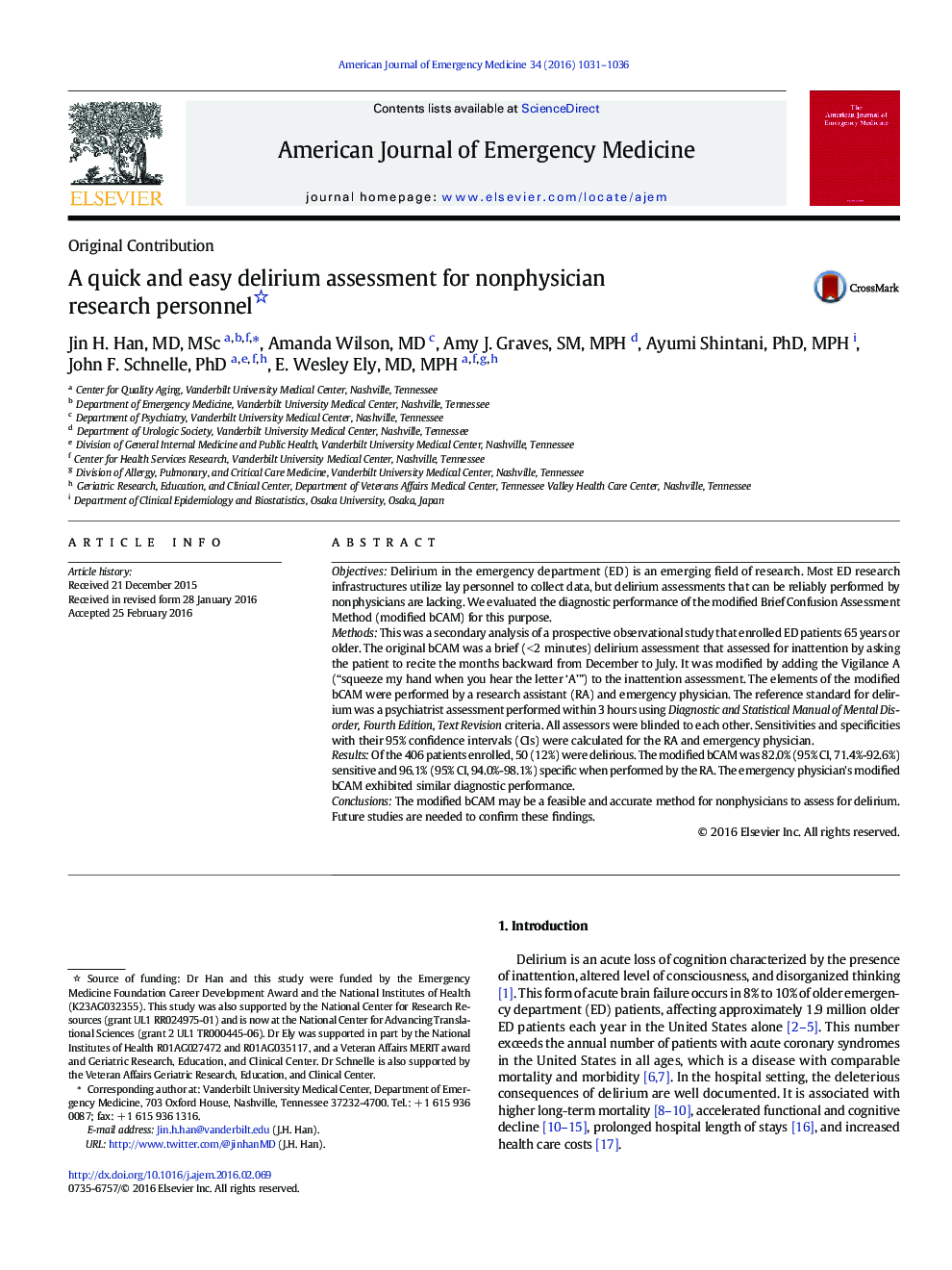| Article ID | Journal | Published Year | Pages | File Type |
|---|---|---|---|---|
| 3223119 | The American Journal of Emergency Medicine | 2016 | 6 Pages |
ObjectivesDelirium in the emergency department (ED) is an emerging field of research. Most ED research infrastructures utilize lay personnel to collect data, but delirium assessments that can be reliably performed by nonphysicians are lacking. We evaluated the diagnostic performance of the modified Brief Confusion Assessment Method (modified bCAM) for this purpose.MethodsThis was a secondary analysis of a prospective observational study that enrolled ED patients 65 years or older. The original bCAM was a brief (< 2 minutes) delirium assessment that assessed for inattention by asking the patient to recite the months backward from December to July. It was modified by adding the Vigilance A (“squeeze my hand when you hear the letter ‘A’”) to the inattention assessment. The elements of the modified bCAM were performed by a research assistant (RA) and emergency physician. The reference standard for delirium was a psychiatrist assessment performed within 3 hours using Diagnostic and Statistical Manual of Mental Disorder, Fourth Edition, Text Revision criteria. All assessors were blinded to each other. Sensitivities and specificities with their 95% confidence intervals (CIs) were calculated for the RA and emergency physician.ResultsOf the 406 patients enrolled, 50 (12%) were delirious. The modified bCAM was 82.0% (95% CI, 71.4%-92.6%) sensitive and 96.1% (95% CI, 94.0%-98.1%) specific when performed by the RA. The emergency physician's modified bCAM exhibited similar diagnostic performance.ConclusionsThe modified bCAM may be a feasible and accurate method for nonphysicians to assess for delirium. Future studies are needed to confirm these findings.
